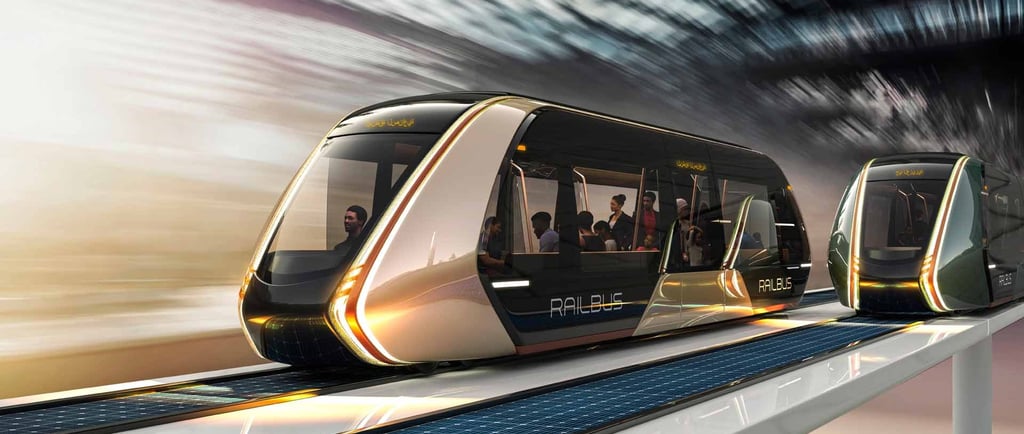RAILBUS: AN INNOVATIVE MASS TRANSIT SYSTEM
The RAILBUS concept is an innovative mass transit system designed to combine the best features of rail and bus transportation. This hybrid mode aims to provide efficient, flexible, and sustainable urban mobility solutions, particularly in areas where traditional rail infrastructure might be too expensive or impractical to develop
EZOMPHAKATHI


The RAILBUS concept is an innovative mass transit system designed to combine the best features of rail and bus transportation. This hybrid mode aims to provide efficient, flexible, and sustainable urban mobility solutions, particularly in areas where traditional rail infrastructure might be too expensive or impractical to develop. Here’s an overview of the key features and benefits of the RAILBUS system:
Key Features
Hybrid Design: The RAILBUS operates on both rail tracks and regular roads. This dual-mode capability allows it to switch seamlessly between rail networks and street-level transit routes, increasing route flexibility and connectivity.
Cost-Effectiveness: By leveraging existing road infrastructure and requiring less extensive rail infrastructure, the RAILBUS system can be more cost-effective to implement and maintain compared to traditional rail systems.
Energy Efficiency: RAILBUS vehicles are designed to be energy-efficient, often incorporating electric or hybrid propulsion systems. This helps reduce greenhouse gas emissions and lowers the overall carbon footprint of urban transit.
Capacity and Comfort: These vehicles typically offer a higher passenger capacity than standard buses, with amenities and comfort levels similar to those found in rail carriages. This includes features like comfortable seating, air conditioning, Wi-Fi, and accessible boarding.
Flexibility: The ability to operate on both rail and road networks allows the RAILBUS to serve a wide range of routes, including areas not accessible by traditional rail. This makes it ideal for expanding transit coverage in suburban and rural areas.
Reduced Congestion: By providing a reliable alternative to car travel, RAILBUS can help reduce traffic congestion in urban areas. The system's efficiency and convenience encourage people to shift from private vehicles to public transit.
Benefits
Enhanced Mobility: RAILBUS systems improve urban mobility by providing a seamless and integrated transit option that connects different parts of the city, including underserved areas.
Environmental Sustainability: With lower emissions and energy consumption, RAILBUS contributes to more sustainable urban environments. The use of electric or hybrid vehicles further enhances this benefit.
Economic Growth: By improving accessibility and reducing transportation costs, RAILBUS systems can stimulate economic growth and development in the regions they serve.
Scalability: The RAILBUS concept can be scaled up or down based on demand and available infrastructure. This scalability makes it a versatile solution for cities of varying sizes and transit needs.
Passenger Experience: With enhanced comfort and convenience, RAILBUS systems can offer a superior passenger experience compared to conventional buses, making public transit a more attractive option.
Implementation Challenges
Infrastructure Integration: Integrating RAILBUS systems with existing road and rail infrastructure can be complex and may require significant planning and investment.
Regulatory Hurdles: Navigating the regulatory environment for both rail and road operations can be challenging, requiring coordination between multiple agencies and stakeholders.
Public Acceptance: Gaining public acceptance and encouraging a shift from private vehicle use to RAILBUS can require robust marketing and demonstration of the system's benefits.
Funding and Investment: Securing funding for the initial development and ongoing operation of RAILBUS systems can be a major hurdle. Public-private partnerships may be essential for successful implementation.
In summary, the RAILBUS represents a promising advancement in mass transit, offering a versatile, sustainable, and efficient solution for modern urban mobility challenges. Its ability to blend the strengths of both rail and bus systems positions it as a forward-thinking option for cities looking to enhance their public transportation networks.
